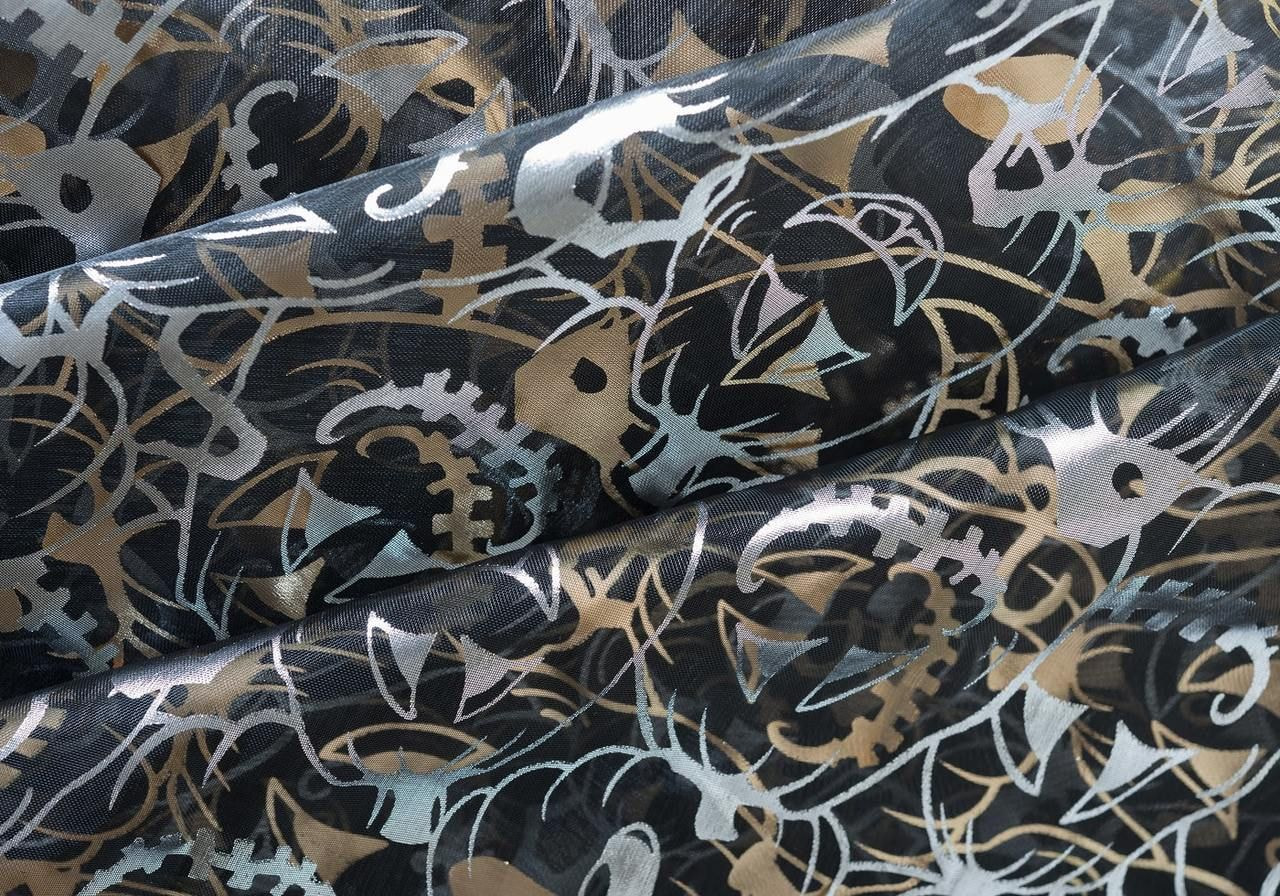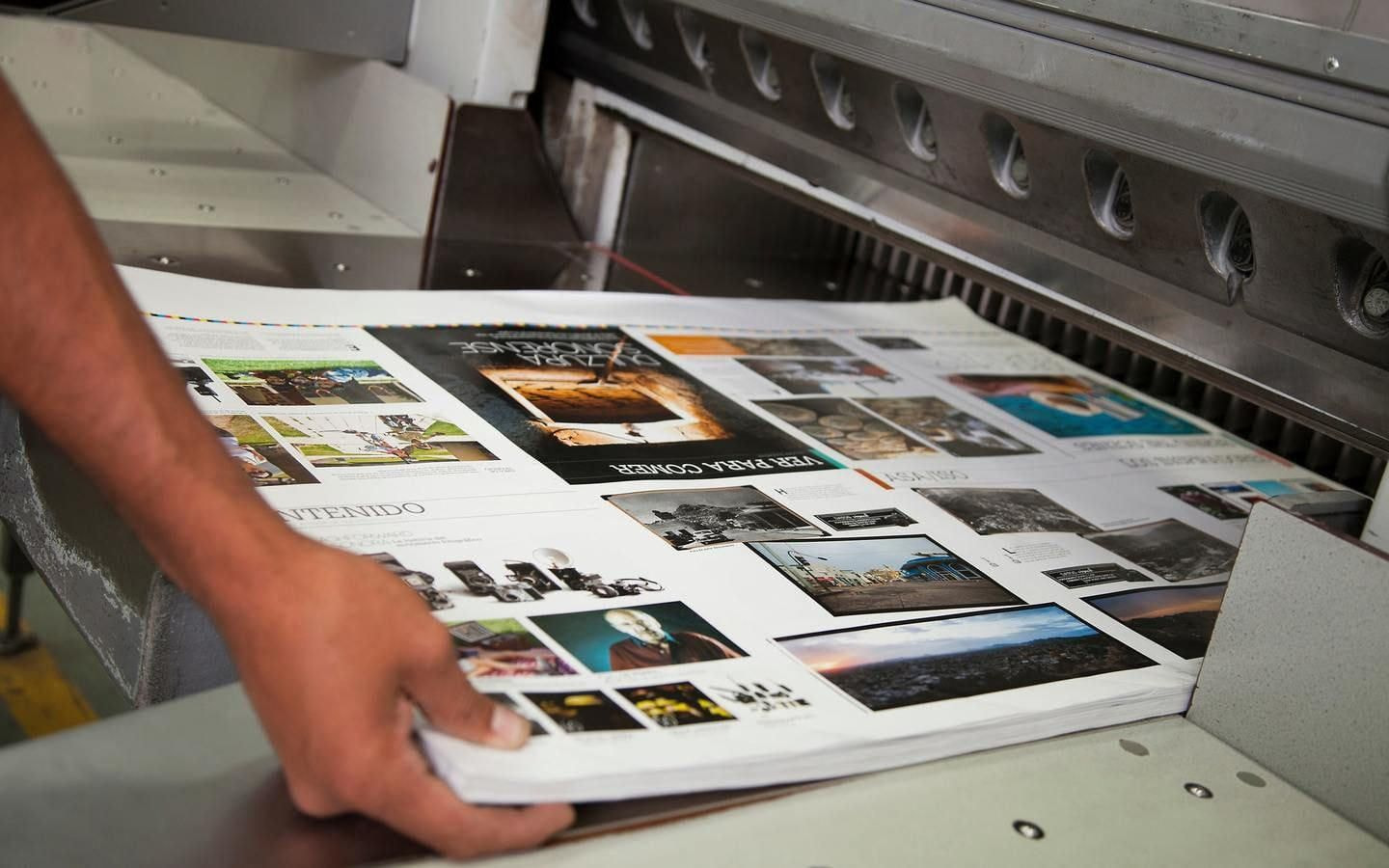Table of contents
Not all fabric-printing methods give equal results. The best printing process depends on your fabric type, design complexity, and whether you're making one shirt or thousands.
From sublimation printing on synthetic fabrics to DTG and screen printing for natural fibers, the right technique ensures your printed fabrics are vibrant, durable, and professionally finished.
In this guide, we’ll break down the top fabric printing methods, helping you choose the perfect match for your project or business.
Popular printing techniques at a glance
|
Printing method |
Best for |
Fabric compatibility |
Design complexity |
Durability |
Hand-feel |
Cost-effectiveness at scale |
Typical use cases |
|
Screen printing |
Bold, solid colors and logos |
Best on natural fibers (cotton) |
Limited colors, needs a separate screen per shade |
Very durable prints |
Slightly raised |
Highly cost-effective in bulk |
Textile industry, merchandising, uniforms |
|
DTG printing |
Full-color, detailed print design |
Cotton and blends |
Handles high detail and gradients |
Moderate durability |
Soft, smooth finish |
Less efficient for bulk, better for small runs |
Custom fabric printing, one-offs, Print on Demand |
|
Sublimation printing (dye sublimation) |
Seamless, all-over designs |
Polyester and synthetic fabrics |
Great for photo-quality designs |
Extremely durable, won’t crack |
Zero texture |
Expensive setup, efficient for mid to large runs |
Activewear, sportswear, promotional textiles |
|
Heat transfer printing |
Short runs, flexible needs |
Works on many fabric types |
Good for photos and color detail |
Moderate, may peel or crack over time |
Can feel stiff |
Not cost-effective at scale |
Hobby printing, small shops |
|
Discharge or resist (block printing) |
Vintage, artisan look |
Works on dark cotton and natural fibers |
Low-detail patterns |
Long-lasting but muted tones |
Very soft, natural |
Time-intensive, not scalable |
Boutique fashion, crafts, traditional methods |
|
DTF printing |
Versatile, multi-color graphics |
Works on most fabrics |
Handles complex printing techniques |
Strong, flexible, durable prints |
Slight texture |
Good for small to mid-volume |
On-demand shops, printing industry, mixed fabric orders |


6 Top fabric printing methods

Screen printing
In this printing process, ink is pushed through a printing screen (mesh stencil) onto the fabric. A separate screen is used per color.
Screen printing is one of the most cost-effective and efficient fabric printing methods, especially for bulk print runs, though setup time and screen costs are higher.
Best for: Bold, vibrant designs on natural fibers like cotton and blends in large-scale production. It’s a classic textile printing method, especially traditional screen printing.
Print: Thick, saturated, and durable prints with excellent opacity. Colors are bold and vivid, ideal for logos and solid-color graphics.
Longevity: These printed fabrics resist fading and cracking well, especially with proper curing and water-based inks on garment-friendly materials.
| Pros | Cons |
|
|
DTG (Direct to Garment)
DTG works like an inkjet printer for clothes. The printer sprays pigment ink, printing onto pretreated garments.
Excellent for short runs and on-demand custom fabric printing thanks to its zero-screen setup and quick turnaround.
Best for: Complex, full-color artwork on natural fibers and blends. Excels in digital printing on fabric with fine detail.
Print: Smooth, soft-to-touch digitally printed fabrics with photographic quality and gradient-rich designs.
Longevity: Moderate. Prints can fade over time if not properly pretreated or cured, but they generally don’t crack, especially when using quality inks.
| Pros | Cons |
|
|
Sublimation printing
In dye sublimation, the design is printed onto transfer paper, then transferred to fabric using heat and pressure. The dye gasifies and fully infuses into the material, making this method ideal for activewear and all-over prints.
Best for: Full-coverage, seam-to-seam designs on synthetic fabrics like polyester blends.
Print: Vibrant prints that become part of the textile itself – no surface residue or texture.
Longevity: Outstanding. The dye bonds with fabric fibers, preventing cracking or fading, making it one of the most durable digital fabric printing techniques.
| Pros | Cons |
|
|
Heat transfer printing

This process involves printing a design onto thermal transfer paper or vinyl sheets and applying it to the fabric with a heat press.
Since it doesn’t require screens or pretreatment, it’s fast and inexpensive for custom, short-run jobs. However, for bulk orders, material costs and pressing time make it less efficient than other printing methods.
Best for: Short runs, promotional items, and custom fabric printing with moderate detail and color variety.
Print: Clean, colorful designs with a slight plastic feel – especially when using vinyl or heavy thermal transfer paper.
Longevity: Good for low-volume use. Quality depends on transfer materials and heat press accuracy – may crack or peel with heavy wear.
| Pros | Cons |
|
|
Discharge and resist printing
Discharge involves applying a chemical to deactivate fabric dye before adding new pigment. Resist (like wax/batik or block printing) prevents dye absorption in areas, creating patterns through fabric.
Traditional printing methods like this prioritize artistry over speed. While they produce unique results, the process is time-intensive and less scalable, making them better for boutique businesses than for large-scale production.
Best for: Subtle designs on natural fibers, particularly deep-colored cotton fabric.
Print: Soft, matte prints where the dye is either removed (discharge) or resisted, resulting in a vintage-like, seamless effect. Tones aren’t as bright or saturated as other fabric printing methods.
Longevity: High, especially with discharge techniques that remove dye rather than overlay ink – less prone to fading or cracking.
| Pros | Cons |
|
|
DTF printing
In DTF, the design is first printed on a clear film with pigment inks, coated with adhesive powder, then heat-pressed onto the fabric. This hybrid method merges the advantages of digital fabric printing with heat transfer.
While it’s not as cheap as screen printing for bulk runs, it offers lower setup costs and faster turnaround for diverse orders. This makes it popular in the printing industry for small and mid-sized businesses.
Best for: Versatile, high-detail printing on varied fabric types, including blends and tricky synthetics.
Print: Crisp, vibrant prints with a slightly raised feel – great for full-color graphics and photo designs.
Longevity: Very good when properly pressed. Less crack-prone than heat transfers and often outperforms DTG in flexibility.
| Pros | Cons |
|
|
Key things to consider when choosing a printing method

Fabric type
The type of fabric directly impacts how well inks bond and how the final print design looks and feels.
Some fabric printing methods work best on natural fibers, others only on synthetics. Choosing the wrong option can limit color vibrancy or durability.
-
Screen printing: Best for cotton and blends – versatile across textile printing projects.
-
DTG printing: Works on natural fabrics and blends, especially cotton.
-
Sublimation printing: Only bonds with polyester or other synthetic fabrics.
-
Heat transfer: Adaptable across many fabric printing surfaces, even non-textile items.
-
Discharge or resist (block printing): Limited to natural fibers like cotton.
-
DTF printing: Compatible with most fabric types, both natural and synthetic.
Design complexity
Complexity refers to the number of colors, fine details, or photographic effects in your artwork. Some printing methods handle detail effortlessly, while others favor bold, simple shapes.
-
Screen printing: Ideal for solid logos, line art, or limited colors.
-
DTG printing: Excels at intricate, full-color print designs.
-
Sublimation printing: Great for seamless, all-over imagery or patterns.
-
Heat transfer: Handles moderately detailed, multi-color designs.
-
Discharge or resist (block printing): Suited for simple patterns and artistic shapes.
-
DTF printing: Manages complex, high-color designs effectively.
Order volume
Volume influences cost-efficiency and turnaround time. Some traditional methods thrive in bulk, while digital printing is better for small runs.
-
Screen printing: High setup, but efficient for large orders.
-
DTG printing: Best for small to mid-size runs.
-
Sublimation printing: Practical for medium to large polyester orders.
-
Heat transfer: Affordable for short runs, slow for big batches.
-
Discharge or resist (block printing): Low scalability, suited to limited runs.
-
DTF printing: Flexible for both small batches and mid-volume orders.
Durability and feel

Durability measures how long prints last through wear and washing, while feel is about texture. Together, they define the customer’s perception of quality in fabric printing techniques.
-
Screen printing: Long-lasting with a slightly raised feel.
-
DTG printing: Soft finish, moderate durability.
-
Sublimation printing: Permanent, no added texture.
-
Heat transfer: Can crack or peel over time, finish may feel plasticky.
-
Discharge or resist (block printing): Very soft, natural finish with subtler tones.
-
DTF printing: Durable prints with a slight texture.
Cost and setup
Costs vary depending on setup, ink use, and scalability. Understanding this helps you measure profitability, whether you’re experimenting with other fabric printing methods or scaling in the textile industry.
-
Screen printing: Higher setup, but cost-effective in bulk.
-
DTG printing: Low setup costs, steady per-unit price.
-
Sublimation printing: Efficient when producing polyester garments at scale.
-
Heat transfer: Low entry cost, poor scalability.
-
Discharge or resist (block printing): Labor-intensive, not cost-efficient at scale.
-
DTF printing: Affordable setup, mid-range per unit cost.
Conclusion
Choosing among the best methods for high-quality fabric printing depends on your desired material, design complexity, and production scale. From digital printing for detail-rich art to dye sublimation for polyester, different printing methods have their own unique strengths.
If you’re ready to create and sell custom-printed apparel and accessories, Printful makes it easy with Print on Demand. Start today and bring your designs to life.


FAQs
For the longest-lasting results, reactive dye printing and dye sublimation lead the way. Both bond directly with the fibers, creating vibrant and durable prints that resist cracking or fading, even after many washes.
Professionals use advanced printing technology, such as digital printing, flatbed screen printing, and sometimes pigment printing, depending on the fabric type and design needs. These methods ensure accuracy, scalability, and consistent high-quality prints.
It depends on the project. Screen printers favor large-volume runs with bold designs, while digital printing excels at intricate, full-color work. For polyester, dye sublimation is the go-to choice to produce high-quality prints that last.
Vector files (AI, SVG, EPS) are best for logos and simple graphics, while high-resolution PNGs work well for complex or photo designs. These formats adapt easily across different methods, ensuring sharp results when using modern printing technology.

By Baiba Blain
With 7+ years of experience in translation and creative writing, Baiba now leads a squad of talented writers, balancing research-backed storytelling with team guidance, quality assurance, and SEO processes. Outside of work, she enjoys exploring old castles, spontaneous road trips, and talking back to her cats. 10/10 arguments won so far.





